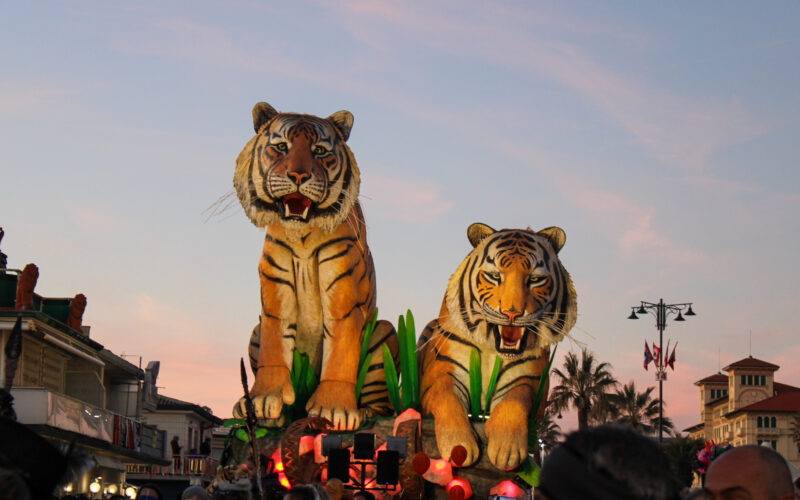Maddie Berger: Editor

Music, costumes, and crowds, local wines and the tempting scents of traditional foods. Italy is rich in beauty and culture any time of the year, but the streets and piazzas truly come to life during holiday celebrations. Thankfully, with customs spanning centuries and varying by region, there are plenty to choose from. You’re likely already familiar with some of these–Venetian Carnival and Easter Mass in Rome, for example, which are world-famous events. But many of the most fascinating celebrations are not as well-known. For when the world returns to normal, here is a year’s worth of underrated celebrations and the foods you should try while you’re enjoying them.
- New Year’s Eve: Bonfire of the Vecchione in Bologna
Parties, music, and fireworks abound in the New Year’s Eve celebrations of Naples, Capri, Rome, and more. If you’re interested in experiencing more distinctive traditions, however, stay in the lively Northern city of Bologna. December 31st actually celebrates La Festa di San Salvestro (Saint Sylvester’s Feast) in honor of an ancient pope who was buried on the date. Each year in Bologna, a new artist designs the Vecchione, a large puppet in the shape of an old man. The puppet is burned in a bonfire at midnight in Piazza Maggiore, symbolizing the end of the old year. Live music, lights, and a street market also add to the excitement in the main piazza, which fills with an energetic crowd.
Taste tip: Celebrate at midnight with Spumante, an Italian sparkling white wine similar to champagne.
- Carnevale Season: Parties and Parades in Viareggio
Trade Venice’s crowded canals for the coastal breezes of Viareggio, which boasts a month-long carnival celebration. Though perhaps less famous internationally, Viareggio’s carnevale is known throughout Italy for its parades of massive, satirical papier-mache floats, which tower up to 70 feet tall. There is no separation between the crowds and the parade route, so the event soon becomes a wild, musical party in the streets. If you arrive early, take time to walk the parade route on La Passeggiata, Viareggio’s seaside boardwalk, where the floats are set up for revelers to view before the event. Don’t forget to come in costume (anything goes) or purchase a handmade carnevale mask when you arrive.
Taste tip: Take advantage of Viareggio’s coastal location and try the carnival-style fried seafood, including various local fish caught freshly.
- Easter: Scoppio del Carro in Florence
Easter Mass and the Pope’s procession annually draw thousands in Rome and the Vatican, but customs dating back centuries can also be found in Florence. Most notably, the Scoppio del Carro (“Explosion of the Cart”) takes place each year in the famous Piazza del Duomo. An elaborate cart, driven by oxen and loaded with firecrackers, sets off smoke and explosions when struck by a mechanical dove. Don’t miss the procession beforehand, when the wagon is led through the streets from Porta al Prato with a crowd of Florentines in Renaissance costumes. If you are interested in attending Easter mass, you can find English services at a few churches in the city, such as St. Mark’s English Church, St. Apostoli, and St. James Church.
Taste tip: Visit a local bakery to try colomba pasquale, a traditional dove-shaped cake that is filled with candied fruit and topped with almonds.
- Valentine’s Day: Celebration of San Valentino in Vico del Gargano
In most of Italy, Valentine’s Day is a holiday celebrated between lovers with romantic dinners and chocolate. An exception to this can be found in a few towns across Italy who call San Valentino their patron saint. One such place is Vico del Gargano, an ancient town in southeast Italy just off the Adriatic Sea. The colors and scents of fresh oranges and lemons fill the streets as a statue of Saint Valentine is paraded through them. Up to 1,000 residents follow the procession, richly dressed in costumes from various era’s of the city’s rulers. A variety of romantic superstitions have also risen here, such as taking a walk down the Vicolo del Baccio (“Kiss Alley”) with your sweetheart for good luck. Lovers leave messages and vows for each other written on the walls, and legend has it that the alleyway provides romantic prosperity to couples and hopeful singles alike.
Taste tip: Indulge in the orange juice blessed by Saint Valentine, which is said to work as a love potion when consumed on Valentine’s Day.
- Christmas: Markets and Mountains in the Dolomites
Look outside of the major Italian cities and opt to spend the holiday in the Dolomite mountains of Northern Italy. Positioned near the Austrian border, the mountainous region of South Tyrol offers a unique blend of Austrian and Italian cultures and cuisines. Take part in the Italian tradition of skiing down the slopes at midnight on Christmas, or cozy up in one of the many mountain resorts. If you want to venture out, visit the town of Ortisei in Val Gardena, which transforms into a picturesque Christmas village at the end of November. Here, you can purchase handcrafted gifts, watch local bands perform, and sample seasonal Christmas cakes and other treats.
Taste tip: Sample a few South Tyrolean wines–the region is famous for its collection of whites, including Riesling and Pinot Grigio.
Nothing allows a visitor to experience Italian culture quite like taking part in one of the country’s many vibrant celebrations. Next time you’re planning a trip to Italy, considering working in at least one of these cultural events.

